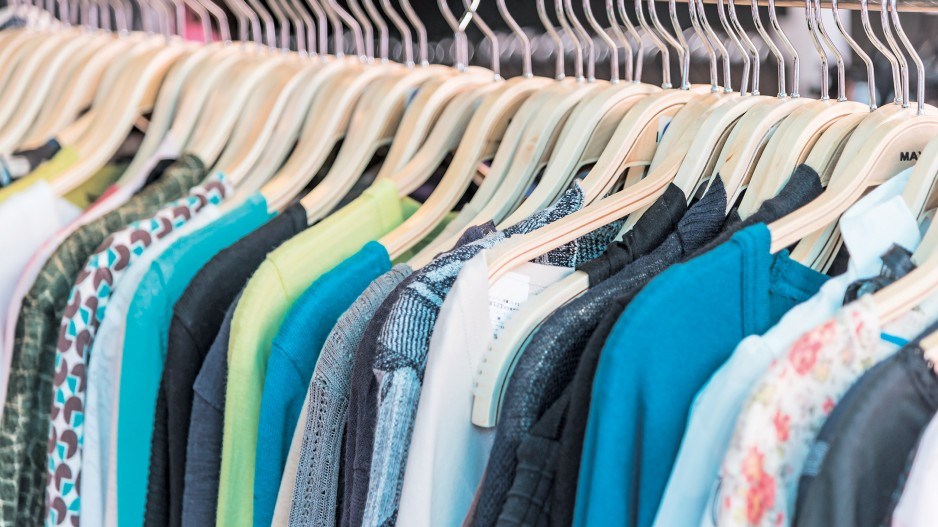Many British Columbians are experiencing the second-hand economy first-hand as the industry is now taking in an estimated $1 billion annually, says a report commissioned by Vancity.
The survey reveals a large majority of British Columbians are engaged in the province’s secondary market: 83% of those surveyed have bought second-hand goods, representing an estimated $1.05 billion provincewide in annual spending, while 72% have sold goods they had previously used.
Jigme Love, founder of the second-hand women’s luxury clothing store Mine & Yours, attributes the second-hand industry’s success to the fall of the stigma surrounding it.
“The size of the market in Vancouver has changed dramatically, and public sentiment towards second-hand shopping has changed so much just in the past three years. I feel like it’s almost mainstream now; it’s a way of life,” said Love. “It’s become completely natural, which I really am happy about because it’s great for everyone in terms of the environment and your wallet.”
Consumer debt load, including hefty mortgages and rents for many British Columbians, leaves money tight for not only discretionary spending, but also paying for essentials. The cost of living is a key contributor to the size of B.C.’s second-hand industry, said William Azaroff, vice-president of community investment for Vancity.
“We surmise that the second-hand market has grown because so many of the indicators have to do with affordability and how the economy is doing,” Azaroff said.
Affordability was the main driver cited by 65% of respondents who buy second-hand items, while 45% of those who sold used goods said they used the money to pay their bills, rent or mortgage. Of note, the Vancity study points to a 2016 IBISWorld report that states B.C. has a higher proportion of Canada’s used-goods stores (18.8%), with just 12% of the Canadian population
Demographics have also played a part in B.C.’s resale market, with the millennial mindset focused on some unique purchase patterns, said Azaroff.
“One of my favourite stats in the report is that, in B.C., 74% of millennials say they’re willing to pay more for a big-ticket item – say over $500 – for something of higher quality or … more durable, if they know it can be resold later.”
Millennials are slightly less active than the average British Columbian in the second-hand market (93% versus 97%). However, millennials are considerably less likely to donate or give away something they own compared with the B.C. average (29% versus 52%).
The resale market also shares some core characteristics with the sharing economy that has emerged in recent years. Much like the sharing economy, the second-hand marketplace allows people to experience a product without having to bear the brunt of the full cost. Millennials value access over ownership, Azaroff said.
The Internet age has also provided a launch pad for both industries’ growth. Free online classifieds sites like Craigslist and Kijiji make the process of advertising used goods and finding a buyer more accessible than bricks-and-mortar pawnshops or second-hand shops, says Azaroff.
Love said a business in the resale industry is pretty easy to get started, but she faced difficulties with inventory and scalability. At the beginning stages of Mine & Yours, Love wanted to publicize the business’ purchase of second-hand clothes for resale from well-known fashion bloggers. At first, the bloggers were wary of participating in the project for fear of the stigma attached to working with second-hand stores. Now, Love said, bloggers are eager and proud to publicize their work with Mine & Yours.

In the second-hand industry, inventory is limited, which in turn narrows consumer choice. This also raises some costs associated with inventory. When Love wanted to showcase her inventory online, she faced logistical problems with taking pictures of each individual item to display on the website.
The circular economy, where goods are reused or wholly recycled with the end goal of zero waste, is not yet at the top of the consumer’s mind.
The Vancity report found that when it comes to the environmental benefits of buying re-used goods, greenbacks still top green concerns. Only 25% of those surveyed said their concern for the environment was a key driver in their decision to participate in the market. Millennials were no more likely to engage in the secondary economy for environmental reasons than were other age groups.
However, the notion of a throwaway purchase might no longer be in fashion. The report identifies a potential shift in consumers who are spending more time weighing the value of their transaction.
“As their finances get tighter, they think about their purchases in terms of an investment,” Azaroff said. “[They ask,] ‘What are we going to buy that will have more durability [and] have value at the end of its life cycle?’”
The report, Thrift Score: An examination of the driving forces behind B.C.’s second-hand economy, included a poll of more than 900 British Columbians and looked at why people buy, sell and donate used goods. The report was written by Vanessa Timmer, executive director of One Earth, a non-profit focused on changing production and consumption patterns.




